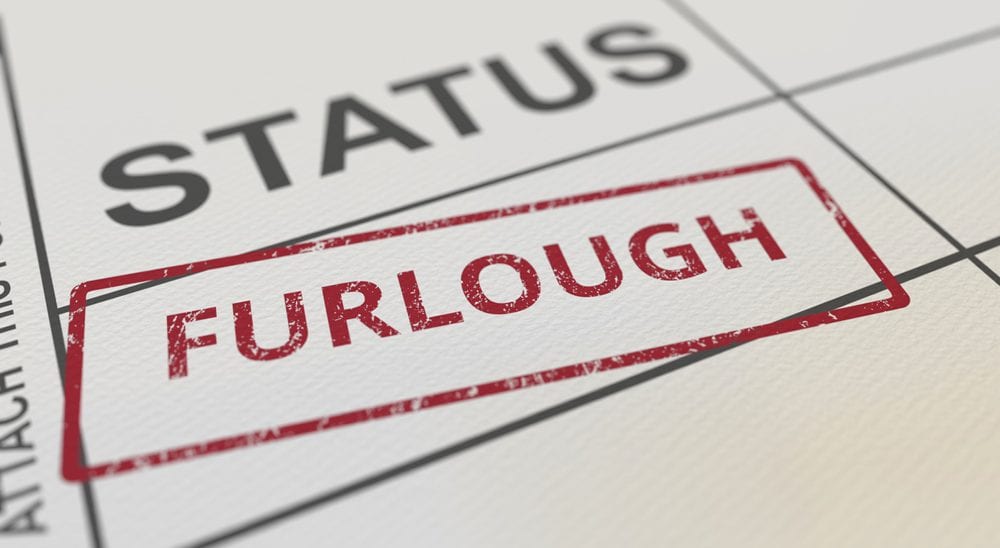The furlough scheme is tapering down – what next for UK businesses?

Nic Redfern, Finance Director at NerdWallet advises UK businesses what to expect post-furlough and how to navigate the rocky transition back to normality.
On Friday 20 March, the Chancellor Rushi Sunak unveiled the Coronavirus Job Retention Scheme (CJRS). It has become the Government’s flagship financial support to people during the coronavirus pandemic.
In fact, at present there are purportedly more than 8 million people across the UK currently on furlough through the CJRS, under which the Government will pay up to 80% of their salaries. It is unsurprising, then, that many businesses will have been unnerved to hear at the end of May that the furlough scheme is coming to an end in the coming months.
So, what changes are being introduced? How can businesses adapt to the tapering down of the initiative? And what options remain for those still requiring financial support to survive the pandemic?
The furlough scheme is changing
On 29 May, Sunak announced a number of changes to the furlough scheme, which will affect how much support is on offer. Here is a quick recap on what was announced.
Firstly, as of 30 June the CJRS will be closed to new entrants. Then, from 1 July, employers will be able to bring staff back part-time – I will discuss this change in more detail later.

Secondly, from August national insurance and pension contributions for furloughed staff will have to be paid by their employers again.
And thirdly, from September, while employees on furlough will continue to get 80% of their salary, the proportion that the state pays will be reduced each month – the government will only pay 70% in September and 60% in October, with the employer having to make up the difference.
The scheme will end on 31 October 2020.
The Government’s decision to change, and ultimately close, the scheme is both to protect public finances, but also to encourage employers to re-employ staff and start actively seeking ways to boost revenue.
Indeed, it is estimated that the state has spent £15 billion in March, April and May covering the salaries of furloughed staff. By the end of the scheme, the figure is expected to reach £80 billion – that is £10 billion for each month the scheme was active.
The onus will now increasingly be put back with the private sector to find ways to mobilise once again, bring staff back from furlough, and to adapt to the “new normal” that awaits us in the second half of 2020.
How businesses can prepare for the tapering down of the furlough scheme
The above figures about the amount that has currently been paid out by the Government through the furlough scheme raise an interesting question about outstanding payments. It is thought the initiative will cost £10 billion a month, but the first three months it has been active have only totalled £15 billion worth of payments.
These approximated figures show us that there are billions of pounds still yet to be paid for the initial three months of the furlough scheme. Indeed, this chimes with the findings of a recent study NerdWallet conducted among over 900 UK businesses; we found that as of April almost half (48%) of British companies had furloughed staff – this figure will likely be even higher now – but of those, 71% were still awaiting funds to be transferred to them from the Government.
Read More: Why Global Crises Drive Technical Innovations
Both the employers and government will need to ensure the payments are brought up to date in the coming months, lest a large gap be left exposed in businesses’ finances.
But more long-term plans will also be required by employers. And to that end, the part-time furlough option, which comes into effect from the start of July, may be of interest.
Here is a simplified example of how it might work: you have a member of staff who earns £2,000 per month and works 40 hours a week. This employee has been furloughed and you are not topping up their salary beyond the 80% offered by the Government. In July, your employee returns part-time and works 20 hours per week (half their normal amount) – they will now receive 50% of their monthly salary from you (£1,000), while the remaining 50% will be eligible via the furlough scheme (80% of it – so £800). That means your employee will now earn £1,800 per month, which is higher than the amount they would be paid if they were furloughed full-time (£1,600).
There are various advantages to this approach. For the business, they can steadily bolster their workforce without bearing the full brunt of their usual salary expenditure. For the employee, they can resume working in a gradual way while also earning more money. And for both, it acts as a convenient steppingstone between being on furlough and working full-time.
Other financial supports still available
Some businesses will not be in a position to bring employees back from furlough just yet, even on a part-time basis. It is important for such companies to remember that there are many financial support schemes still available.
For example, loans are available through the Coronavirus Business Interruption Loan Scheme (CBILS) and Bounce-Back Loans initiatives. The Government is also providing a Small Business Grant Fund (SBGF) to businesses that already receive Small Business Rates Relief (SBRR) or Rural Rates Relief (RRR).
Businesses can also avoid some immediate financial burdens by deferring VAT payments due between 20 March and 30 June 2020, or by delaying any Income Tax Self-Assessment payments that would be due by 31 July 2020 until 31 January 2021.
The winding down of the furlough scheme will pose new challenges for businesses across the UK. But they must remember that other forms of support are available and embrace the challenges of adapting to the constantly changing financial landscape.